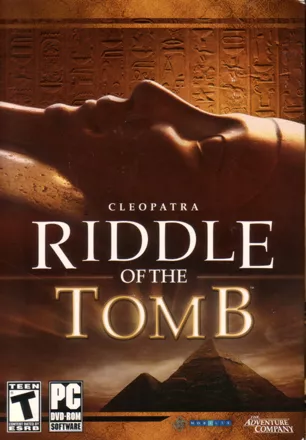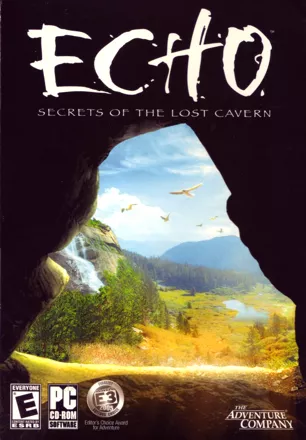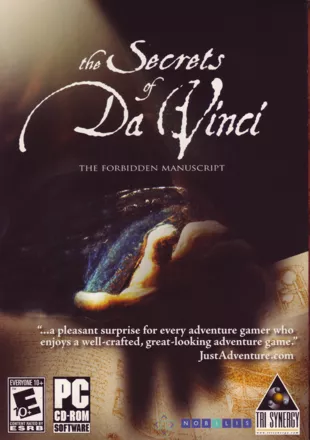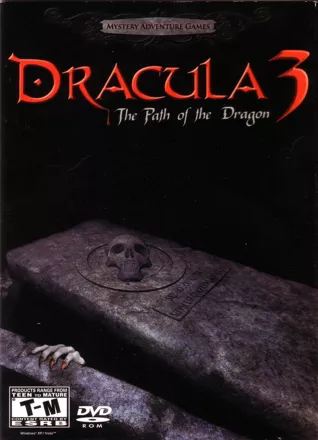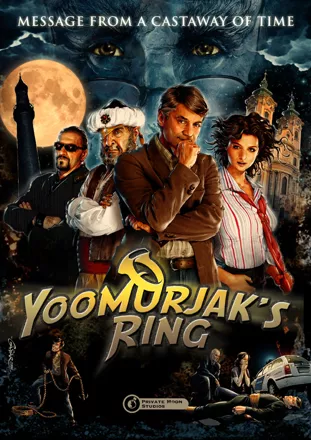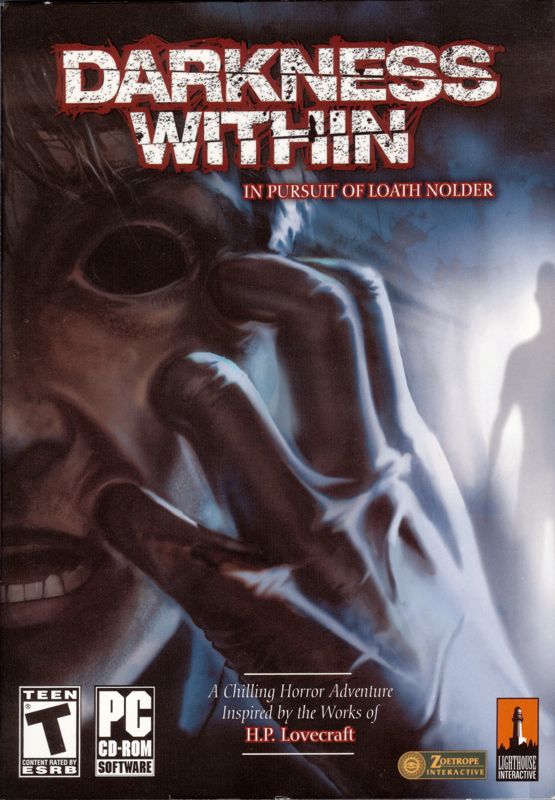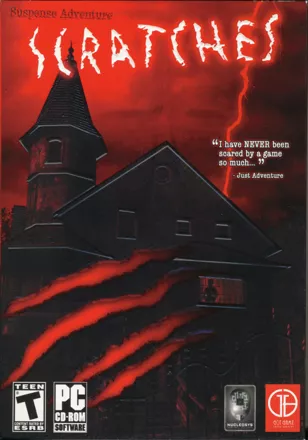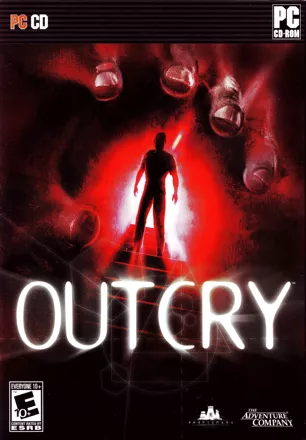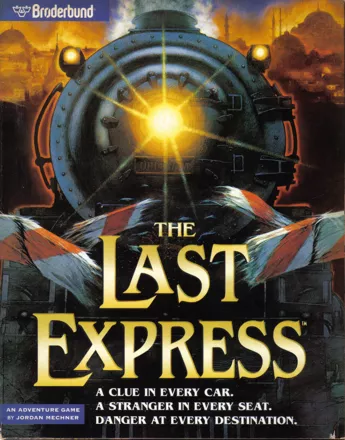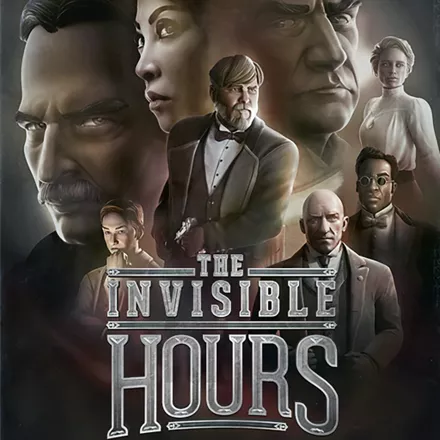Darkozric
Arbiter

- Joined
- Jun 3, 2018
- Messages
- 1,898
Quern: Undying Thoughts (2016) Zadbox Entertainment





Here we go again firstpersonfags, your friendly first person autist is back after finishing Quern - Undying Thougths, another kickstarter game that has been released the same year with Obduction.
Just as it was impossible to talk about Obduction without comparing it to Myst/Riven, I cannot talk about Quern without comparing it to Obduction.
They're both aiming at the same target; a first-person adventure placing yourself in a lonely world in which the puzzles span every aspect of the environment.
Quern is made by 4 Hungarians and raised 25K in contrast to Obduction's $1.321.300, this is another good example that a bigger amount of money doesn't always equal to a better game.
You're a nameless protagonist, mysteriously transported to a deserted island and the first item in front of you is a letter by professor William Maythorn.
The professor informs you that he bears the responsibility of trapping you in this island, but he has no intention of harming you in any way.
As a matter of fact, you should consider yourself lucky for the knowledge he's about to share with you. He also mentions that he will require your assistance in an essential matter (as if you have another choice!).
Quern is about a lost ancient civilization, the Dulmar. Manuscripts refer to this island as the "Forbidden World", there is no day/night cycle nor weather changes, even the whole concept of time has a different meaning.
The first thing you'll notice upon your arrival is that this place is brimmed with endemic minerals that can be used as a weak but consistent energy source.
As you've rightly guessed it, prepare to become a prestigious crystalomancer. You're about to wield crystals to unveil many secrets and solve a lot of shit.
The story is the classic excuse for the puzzle galore that will follow, and mostly told by the letters you'll find scattered around the island, which are also voice acted.
It's familiar yet mysterious; who are these Dulmarians and why have they disappeared? Where is Maythorn and what's his end game? Are you truly alone on this island? How many worlds exist out there?
There are a few Riven similarities, the environmental story-telling is present, but it doesn't adequately support the story in its entirety, as it was in the case of Riven.
There are also references about other places in the "chainworld" but the game stays focused on the story of Maythorn. Those references are hints that there is material for a sequel, if they decide to take this road.
Towards the end, the game delivers an awkward monologue that spoon-feeds you the backstory.
It would've been more satisfying to piece together the story fragments by yourself over the course of the game by interacting with the environment, or finding books.
That said, the story is ok and it even presents you with 2 moral dilemmas.
As for the visuals, I'm not sure if this was their initial artistic vision or the limited budget, but there's a lot of grey/white and orange, it's the complete opposite of Obduction.
In any case, these colors compose a wintery environment in contrast to the usual sunny exotic landscapes.
Quern has the most Riven-esque feel to any non Cyan game I've played. From the adobe walls and houses to the strange steampunk machines, atmosphere is pretty good, but not quite as alien as it was in the Age 233 for example.
Admittedly, after a while it looks a bit samey, but the level design with its cleverly placed shortcuts makes up for it. There is a very special area later on, but I would have liked to see a few more surprises like this one.
Music has a nostalgic Myst-y vibe, there is a plethora of tracks, melodic short tunes, atmospheric percussion with bells, dramatic operatic vocals fused with bass flute,
the heartfelt "Land Of Undying Thoughts" when you finally arrive in a special place, the aquatic and relaxing "Behind the Glass",
"The Library" with its Moonlight Sonata 1st mvt vibe, all of those compose a memorable set. There are 31 tracks, and a few of them got a bit repetitive after a while, but it didn't bother me that much.
Now lets get to the meat of the game, since we have a lot of steaks to grill.
Puzzles in Quern are a double-edge sword. It's pretty obvious that the devs are huge Mystfags and their priority was to deliver a rich game, which I appreciate as an effort.
Quern has a Riven-like connectivity in which some puzzles will interrelate and you'll use what you learn from one puzzle to solve another, those are the peak moments.
The game has lots of puzzle types. It's downright exuberant with them.
Sliders, mechanical puzzles, symbol-finding/symbol-matching, letter puzzles, sound-based puzzles, light-based puzzles, weight-based puzzles, alchemy potion preparations, and that's not remotely a complete list.
Moreover, Quern mostly adheres to the puzzle design rule of "do everything twice" (once as a directly-presented puzzle, and once in a new context where you have to remember that thing you did earlier in the game).
Obduction does this too, but it has fewer puzzle concepts! With Quern, by the time you're halfway through, you're balancing a mental map of everything you've encountered (the mental map part is important, more about this later).
Any of the mechanisms or locations could wind up being relevant again. Not to mention a mental map of the island and where every unsolved puzzle is, because any of them might be next.
All of this sounds good, and often it is, but the problem here is that with this amount of puzzles it is bound to end up with some uninspired ones (I'm looking at you, fucking sound-memory piece of shit).
If you have less experience with the genre you won't notice it, but as a veteran you won't escape the deja-vu feeling.
That been said, the game offers a respectable amount of good ones. Crystal puzzling and the teleportation mechanic were fun, along with a few mechanical ones.
It feels satisfying when you manage to unlock the cleverly placed path-walks.
Myst 3 influences are also present, telescopic puzzles made their comeback in a glorious way.
Towards the finale, you'll encounter 3 very good puzzle set-pieces (won't spoil them), another peak of the game.
Did I mention that you have an inventory? Yup, there is one but don't expect picking up random garbage, there's no inventory bloat here.
There is also an option to highlight interactable items. Usually I don't use this shit in games, I like pixel hunting, but let me tell you that this game could also be titled as "Quern: Unused Hammers".
In a devious trolling move, the devs decided to place hammers and other tools (but mostly hammers) in every fucking corner of the island.
You will frequently find a workbench full of tools, and it's not at all clear which are the important tools and which are just scenery (item highlight is actually useful here).
With so many hammers, I was craving to smash some shit. In the end, the niggas didn't allow me to do that. If you plan to play this, forget the fucking hammers!
As far as I recall, Obduction keeps most of the decorative tools out of reach. It also avoids puzzles that make you think "if I only had a hammer..."
The game has an in-game notebook where you can take screenshots and keep notes, I used it a few times but overall it was useless. Better to have your physical notebook on standby or even your phone for some screenshots, if you're lazy.
Another thing that I want to point out are the switches. Quern is generally in tune with Cyan's style, but it misses a few of the details.
Obduction is good about showing the difference between a two-way switch (which can be flipped back and forth) and a one-way switch (which locks after you flip it).
The control might retract to show that it's locked, or you might see a pin drop into place.
Quern tends not to do this. Thus, one-way switches feel arbitrary.
It's particularly annoying when the effect of the switch is not directly visible; then you have no way to experiment and figure it out.
You might say that every control should be flippable back and forth. That's how real life works. But when designing a game, you often want to simplify.
Once the power has been turned on, it stays on. Once door X is open, it stays open for the rest of the game. And so on.
This is a useful trick for keeping the player out of stuck-unwinnable states.
There's one puzzle that imo was a bit misleading, and that makes it a good case study. I will describe some elements of the puzzle and try to avoid spoilery specifics (mental map relevancy).
You might think that this is just a lower budget unapologetic Myst-clone, and you're right.
To be more specific, it mostly feels like a realMyst influenced by the first 3 Myst games and a few other adventures.
Although I value when modern devs take cues from the masters, their focus on cramming as many puzzles as they could, has led them to miss the opportunity to introduce innovating ideas.
Some things didn't work as much organically as I wanted them to, but there's plenty of stuff to like here. Personally I enjoyed it more than Obduction.
First person adventures are a niche genre that has been in decline for many years (and still is, with extremely few exceptions).
Thus, it is always a pleasant surprise when an unknown random team appears out of nowhere offering a respectable experience like this.
So yes, I recommend this game, you should play it.





Here we go again firstpersonfags, your friendly first person autist is back after finishing Quern - Undying Thougths, another kickstarter game that has been released the same year with Obduction.
Just as it was impossible to talk about Obduction without comparing it to Myst/Riven, I cannot talk about Quern without comparing it to Obduction.
They're both aiming at the same target; a first-person adventure placing yourself in a lonely world in which the puzzles span every aspect of the environment.
Quern is made by 4 Hungarians and raised 25K in contrast to Obduction's $1.321.300, this is another good example that a bigger amount of money doesn't always equal to a better game.
You're a nameless protagonist, mysteriously transported to a deserted island and the first item in front of you is a letter by professor William Maythorn.
The professor informs you that he bears the responsibility of trapping you in this island, but he has no intention of harming you in any way.
As a matter of fact, you should consider yourself lucky for the knowledge he's about to share with you. He also mentions that he will require your assistance in an essential matter (as if you have another choice!).
Quern is about a lost ancient civilization, the Dulmar. Manuscripts refer to this island as the "Forbidden World", there is no day/night cycle nor weather changes, even the whole concept of time has a different meaning.
The first thing you'll notice upon your arrival is that this place is brimmed with endemic minerals that can be used as a weak but consistent energy source.
As you've rightly guessed it, prepare to become a prestigious crystalomancer. You're about to wield crystals to unveil many secrets and solve a lot of shit.
The story is the classic excuse for the puzzle galore that will follow, and mostly told by the letters you'll find scattered around the island, which are also voice acted.
It's familiar yet mysterious; who are these Dulmarians and why have they disappeared? Where is Maythorn and what's his end game? Are you truly alone on this island? How many worlds exist out there?
There are a few Riven similarities, the environmental story-telling is present, but it doesn't adequately support the story in its entirety, as it was in the case of Riven.
There are also references about other places in the "chainworld" but the game stays focused on the story of Maythorn. Those references are hints that there is material for a sequel, if they decide to take this road.
Towards the end, the game delivers an awkward monologue that spoon-feeds you the backstory.
It would've been more satisfying to piece together the story fragments by yourself over the course of the game by interacting with the environment, or finding books.
That said, the story is ok and it even presents you with 2 moral dilemmas.
As for the visuals, I'm not sure if this was their initial artistic vision or the limited budget, but there's a lot of grey/white and orange, it's the complete opposite of Obduction.
In any case, these colors compose a wintery environment in contrast to the usual sunny exotic landscapes.
Quern has the most Riven-esque feel to any non Cyan game I've played. From the adobe walls and houses to the strange steampunk machines, atmosphere is pretty good, but not quite as alien as it was in the Age 233 for example.
Admittedly, after a while it looks a bit samey, but the level design with its cleverly placed shortcuts makes up for it. There is a very special area later on, but I would have liked to see a few more surprises like this one.
Music has a nostalgic Myst-y vibe, there is a plethora of tracks, melodic short tunes, atmospheric percussion with bells, dramatic operatic vocals fused with bass flute,
the heartfelt "Land Of Undying Thoughts" when you finally arrive in a special place, the aquatic and relaxing "Behind the Glass",
"The Library" with its Moonlight Sonata 1st mvt vibe, all of those compose a memorable set. There are 31 tracks, and a few of them got a bit repetitive after a while, but it didn't bother me that much.
Now lets get to the meat of the game, since we have a lot of steaks to grill.
Puzzles in Quern are a double-edge sword. It's pretty obvious that the devs are huge Mystfags and their priority was to deliver a rich game, which I appreciate as an effort.
Quern has a Riven-like connectivity in which some puzzles will interrelate and you'll use what you learn from one puzzle to solve another, those are the peak moments.
The game has lots of puzzle types. It's downright exuberant with them.
Sliders, mechanical puzzles, symbol-finding/symbol-matching, letter puzzles, sound-based puzzles, light-based puzzles, weight-based puzzles, alchemy potion preparations, and that's not remotely a complete list.
Moreover, Quern mostly adheres to the puzzle design rule of "do everything twice" (once as a directly-presented puzzle, and once in a new context where you have to remember that thing you did earlier in the game).
Obduction does this too, but it has fewer puzzle concepts! With Quern, by the time you're halfway through, you're balancing a mental map of everything you've encountered (the mental map part is important, more about this later).
Any of the mechanisms or locations could wind up being relevant again. Not to mention a mental map of the island and where every unsolved puzzle is, because any of them might be next.
All of this sounds good, and often it is, but the problem here is that with this amount of puzzles it is bound to end up with some uninspired ones (I'm looking at you, fucking sound-memory piece of shit).
If you have less experience with the genre you won't notice it, but as a veteran you won't escape the deja-vu feeling.
That been said, the game offers a respectable amount of good ones. Crystal puzzling and the teleportation mechanic were fun, along with a few mechanical ones.
It feels satisfying when you manage to unlock the cleverly placed path-walks.
Myst 3 influences are also present, telescopic puzzles made their comeback in a glorious way.
Towards the finale, you'll encounter 3 very good puzzle set-pieces (won't spoil them), another peak of the game.
Did I mention that you have an inventory? Yup, there is one but don't expect picking up random garbage, there's no inventory bloat here.
There is also an option to highlight interactable items. Usually I don't use this shit in games, I like pixel hunting, but let me tell you that this game could also be titled as "Quern: Unused Hammers".
In a devious trolling move, the devs decided to place hammers and other tools (but mostly hammers) in every fucking corner of the island.
You will frequently find a workbench full of tools, and it's not at all clear which are the important tools and which are just scenery (item highlight is actually useful here).
With so many hammers, I was craving to smash some shit. In the end, the niggas didn't allow me to do that. If you plan to play this, forget the fucking hammers!
As far as I recall, Obduction keeps most of the decorative tools out of reach. It also avoids puzzles that make you think "if I only had a hammer..."
The game has an in-game notebook where you can take screenshots and keep notes, I used it a few times but overall it was useless. Better to have your physical notebook on standby or even your phone for some screenshots, if you're lazy.
Another thing that I want to point out are the switches. Quern is generally in tune with Cyan's style, but it misses a few of the details.
Obduction is good about showing the difference between a two-way switch (which can be flipped back and forth) and a one-way switch (which locks after you flip it).
The control might retract to show that it's locked, or you might see a pin drop into place.
Quern tends not to do this. Thus, one-way switches feel arbitrary.
It's particularly annoying when the effect of the switch is not directly visible; then you have no way to experiment and figure it out.
You might say that every control should be flippable back and forth. That's how real life works. But when designing a game, you often want to simplify.
Once the power has been turned on, it stays on. Once door X is open, it stays open for the rest of the game. And so on.
This is a useful trick for keeping the player out of stuck-unwinnable states.
There's one puzzle that imo was a bit misleading, and that makes it a good case study. I will describe some elements of the puzzle and try to avoid spoilery specifics (mental map relevancy).
The puzzle has two stages ("Do everything twice", remember?). The first stage is a straightforward information-matching puzzle.
You need to look at two clues, figure out what each diagram means, combine the information, and apply the result to a device.
When you push the right buttons, you're not finished. The device ostentatiously turns upside down.
It's clear that you have to use the device again, but with a new button sequence. You now have to interpret the clues "upside down".
There are a couple of things that could apply, so you try one of them. Then you try a different one.
Then you try applying those ideas to the other clue. Then you start trying combinations of interpretations.
None of these works. You have to go to the other side of the island (the mental map that I talked about) and find a place marked by a familiar symbol.
There you will find a third clue, which supersedes one of the originals. Now the second stage is solvable.
The problem here is not missing the third clue; it's believing that the first two clues are sufficient.
The ambiguity of the upside-down hint, while a fine puzzle element in itself, misleads players into thinking that that's the entire second stage of the puzzle - figuring out the right interpretation of "upside down".
Anyway, if you're very observant and capable of "drawing" a good mental map in your head then you probably have no issue with this one, but for me it was a head-scratching situation.
You need to look at two clues, figure out what each diagram means, combine the information, and apply the result to a device.
When you push the right buttons, you're not finished. The device ostentatiously turns upside down.
It's clear that you have to use the device again, but with a new button sequence. You now have to interpret the clues "upside down".
There are a couple of things that could apply, so you try one of them. Then you try a different one.
Then you try applying those ideas to the other clue. Then you start trying combinations of interpretations.
None of these works. You have to go to the other side of the island (the mental map that I talked about) and find a place marked by a familiar symbol.
There you will find a third clue, which supersedes one of the originals. Now the second stage is solvable.
The problem here is not missing the third clue; it's believing that the first two clues are sufficient.
The ambiguity of the upside-down hint, while a fine puzzle element in itself, misleads players into thinking that that's the entire second stage of the puzzle - figuring out the right interpretation of "upside down".
Anyway, if you're very observant and capable of "drawing" a good mental map in your head then you probably have no issue with this one, but for me it was a head-scratching situation.
You might think that this is just a lower budget unapologetic Myst-clone, and you're right.
To be more specific, it mostly feels like a realMyst influenced by the first 3 Myst games and a few other adventures.
Although I value when modern devs take cues from the masters, their focus on cramming as many puzzles as they could, has led them to miss the opportunity to introduce innovating ideas.
Some things didn't work as much organically as I wanted them to, but there's plenty of stuff to like here. Personally I enjoyed it more than Obduction.
First person adventures are a niche genre that has been in decline for many years (and still is, with extremely few exceptions).
Thus, it is always a pleasant surprise when an unknown random team appears out of nowhere offering a respectable experience like this.
So yes, I recommend this game, you should play it.











































































